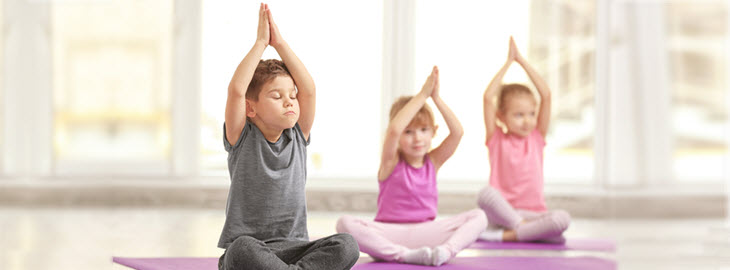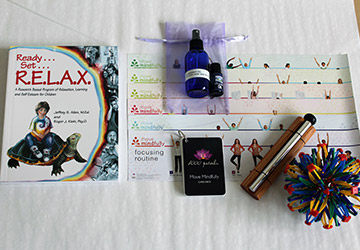
Third graders give us an A+ lesson on how to handle stress
There really are ways to re-harness some of that positivity from “the carefree days of our youth”
Mindfulness is the current buzzword when it comes to health and well-being. But what does it really mean?
“Being mindful means being calm, focused and ‘present in the moment’,” says Regions Hospital health coach Brooke Campbell. “And it applies to everyone, from children to adults!”
In fact, children might have some of the best ideas on how to be mindful. That’s certainly the case when it comes to a class of third graders from Garlough Environmental Magnet School in West St. Paul.
Their teacher, Ms. Stephanie Kennelly, extended the practice of movement and mindfulness into her classroom after receiving training from 1000 Petals. And now it’s something the students work on every day.
Recently, the class visited Regions to share their strategies. Here are 4 tips the kids gave on how to relax and manage stress:
 Elementary school teacher Stephanie Kennelly has a variety of tips on how you can integrate mindfulness into your and your children’s day-to-day.
Elementary school teacher Stephanie Kennelly has a variety of tips on how you can integrate mindfulness into your and your children’s day-to-day.-
Focus on positive intentions.
-
Bring breathing and yoga techniques into your day-to-day.
-
Remember the five S’s when you get stressed out or mad.
-
Eat better. Get power.
“Think about how you want to show up today.” This is a phrase that Ms. Kennelly repeats each morning to her students. And it’s something you can do every day, too.
Wondering how you can hold yourself accountable to your intention? Try putting it in writing! On the day the class visited Regions, the students wrote down their intentions for the day on the back of their name tags so they could refer back to them. One child’s intention read: “I will be focused, strong and kind.”
Yoga techniques like balance poses, stretches and deep breathing can help a lot! The “volcano” is one pose that the third graders say is especially useful. You start with your hands together at the heart, lift your arms up over your head and out. It allows you to relax and stretch the shoulders, where many of us hold tension.
The “wood chopper” is another favorite. You put both hands together over your head as if holding an ax. Then you throw your arms and body down with a “huh!” The exhalation and movement is a good way to let out frustration.
“When you go there in the body, you go there in the mind,” the class said during their visit. And according to Ms. Kennelly, using essential oils like peppermint and pinwheels for breathing exercises can enhance these techniques.
Stop, sigh, stretch, shake and smile. The five S’s allow you to refocus, get calm and loosen up.
And remember to “be where your feet are,” as one third grader says. Our minds are racing from one thing to the next all day. If you can take time to pause and check in with your body, mind and emotions, you will feel a sense of calm and focus. And that’s what helps us feel better and be more present for what we really want to focus our energy on.
At Garlough Environmental Magnet School, a child isn’t sent to the principal’s office if he or she misbehaves. Instead the first stop is the “Relaxation Station.” There, the child can take a moment to slow down, refocus and create a positive experience rather than a negative one.
“Sometimes you will wonder where the teacher is. And you’ll find her in the relaxation station,” Ms. Kennelly said with a smile.
Eating at least five fruits and vegetables per day is the key to feeling healthier and more energized. So be mindful with your snacking!
Twice a week, fresh fruit and vegetables are brought into Ms. Kennelly’s class for everyone to try. Students discuss the flavors and textures of the food. And it’s gotten more kids willing to try new foods.
Looking for better-for-you recipe ideas that taste great? Check out the yumPower Power Pack.
Mindfulness applies to nearly every part of life. It includes everything from mindful commuting, to being mindful of what we eat (and how it smells and tastes) to being mindful of opportunities to sneak in some physical activity – or rest – during our busy days. And for adults, a good place to start learning the art of mindfulness is from these third graders!
Related content:
- Kids’ healthy eating habits have a snowball effect
- Park Nicollet doc prescribes yoga
- Online therapy that gives a boost to your emotional fitness